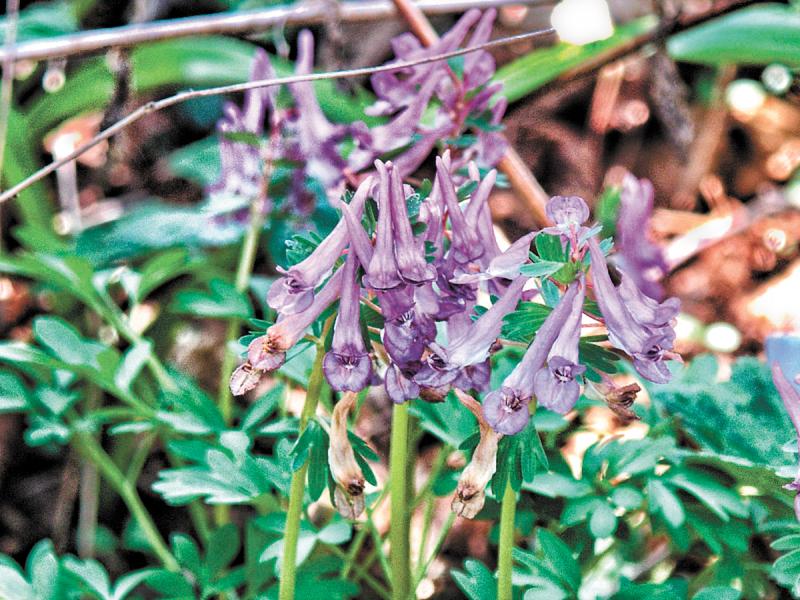Life is fleeting, and few things are as fleeting as yesterday’s news. When a shipment of British stamps failed to arrive in British Guiana, the postmaster printed his own penny stamp for mailing a weekly newspaper.
In 1873, a 12-year-old boy named Louis Vernon Vaughan, while cleaning out his uncle’s home, came across an old issue of the Royal Gazette newspaper with an odd purple stamp on it. Being a new stamp collector, he saved the stamp. The penny stamp, believed to be the only surviving one of its kind, sold in 2014 for $9,480,000.
Stamps and newspapers are known as ephemera, from Greek meaning "lasting only one day.”
In the garden, we have plants with short life cycles, the spring ephemerals. These are perennial plants that sprout quickly in the spring, bloom and produce seeds, then die down to their underground parts.
One of the nicest of these perennial woodland wildflowers is the Fumewort (Corydalis solida). This blooms in spring with purple, pink, blue or white flowers with winged petals and upswept spurs on 10-inch spikes above deeply divided, fern-like, gray-green leaves. Some of the named varieties of fumewort include Beth Evans, whose pink tubular flowers fade to a light pastel, and G.P. Baker, with striking bright-red blossoms.
This is one of the very best bulbs for naturalizing, in time forming carpets of rich spring color. These bulbs are technically tubers, looking like tiny, shriveled potatoes. Plant the small bulbs in the fall three to four inches deep and three to four inches apart in soil that drains well and doesn't become swampy. They do best in partial shade or full sun, so plant them alongside pools and under deciduous trees and shrubs. They also do well in rock gardens, and also in pots. Fumeworts will bring pollinators such as bees and butterflies to your garden. A word of caution – because they contain alkaloids, they can be poisonous to grazing livestock or pets if eaten.
Fumeworts are quite hardy and will tolerate most types of soil from clay to sandy loam, but they do best in rich soil with lots of organic matter. Fumeworts are hardy in USDA zones 4-8 and are usually not eaten by deer. If you do not want them to spread, cut the dead flowers off at the top of the stem after they bloom, so they don’t go to seed, but let the leaves die down naturally before mowing or cutting them back. The green leaves produce nourishment for next year's blooms.
You can grow fumewort from seeds. The seeds need cold treatment in order to sprout, so plant them directly in the garden in the fall. You can also propagate fumewort by dividing the plants after they have died down in late spring or early autumn.
For lasting beauty, plant tubers or seeds of the spring ephemeral fumewort this fall. The quick growth and dieback will remind us of the passing of life and rebirth. And save your old copies of the Cape Gazette, because yesterday’s news can sometimes be worth millions.




















































